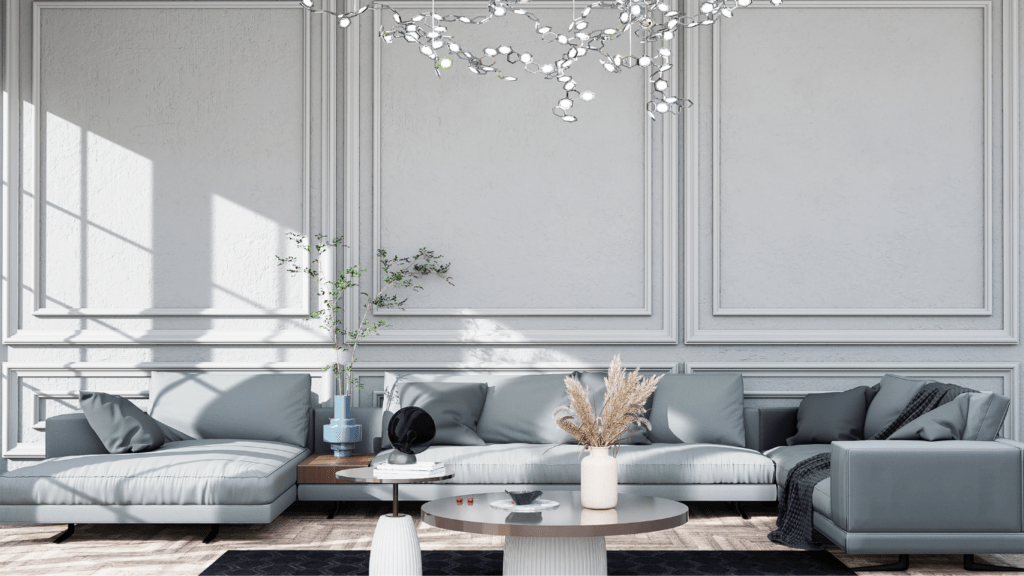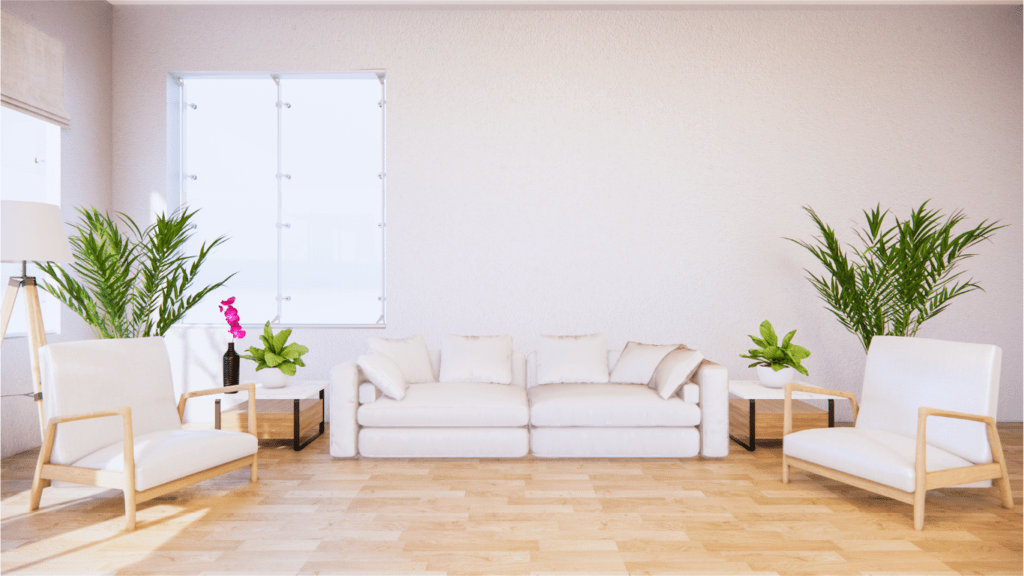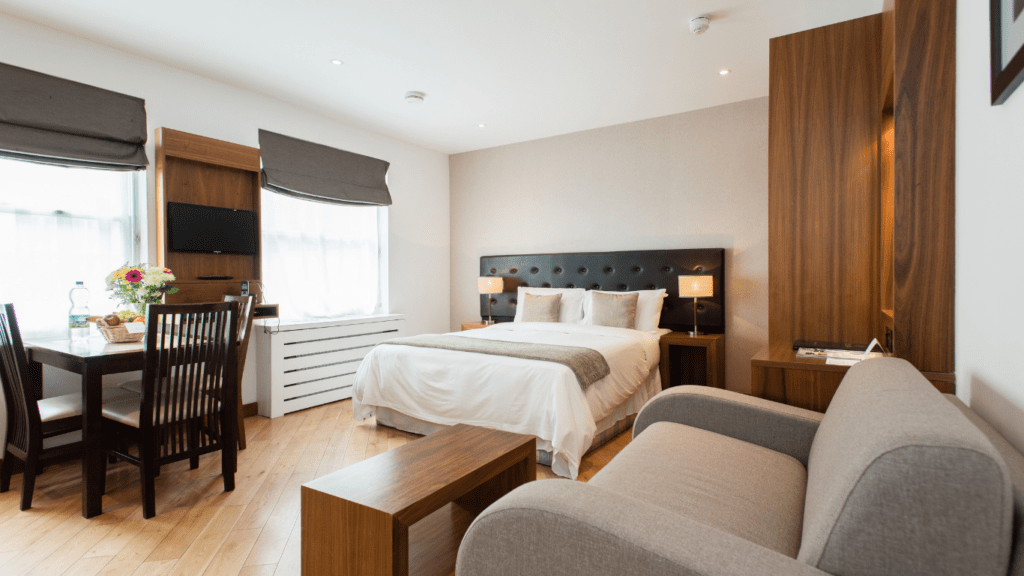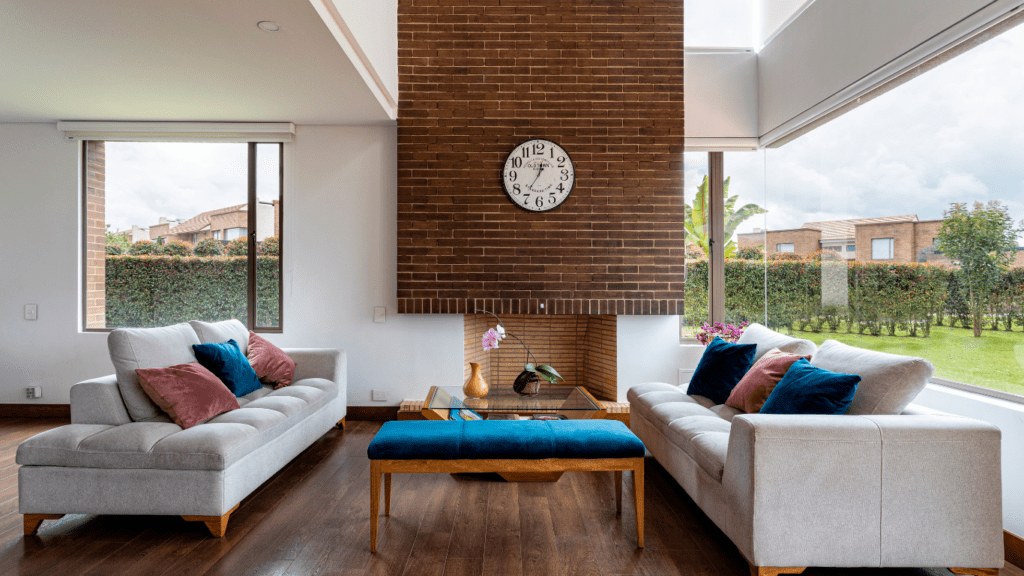Understanding Your Space
Analyzing my living room’s dimensions and layout helps me create an efficient furniture plan. Before arranging anything, I measure the room and note the location of doors, windows, and built-in elements. Knowing these points allows for a balanced arrangement.
Identifying the room’s purpose is crucial. Whether I use the living room for entertaining guests, watching TV, or reading, understanding its primary functions influences furniture choices and placement. A social gathering space needs more seating options; a solo retreat may require fewer but more comfortable seats.
Considering the focal point directs where to place larger furniture pieces. It could be a fireplace, a TV, or a large window. Arranging furniture around this focal point creates a cohesive look. For example, in my living room, the sofa faces the fireplace, making it the room’s centerpiece.
Traffic flow is essential. I ensure pathways are unobstructed by maintaining at least 2-3 feet of walking space between pieces. This prevents the room from feeling cramped and allows easy movement. In larger spaces, I sometimes use a rug to define zones, aiding in traffic management.
Lighting plays a significant role. I assess natural light and supplement it with artificial sources as needed. Floor lamps, table lamps, and ceiling lights can enhance the room’s atmosphere. In my living room, I use floor lamps in corners with less natural light, adding balance and warmth.
Storage solutions keep the living room organized. I incorporate shelves, cabinets, and multifunctional furniture like ottomans with hidden compartments. By doing this, I minimize clutter and maintain a streamlined look.
Choosing the Right Furniture
Choosing the right furniture is crucial for a harmonious living room. It blends aesthetics and practicality, creating a balanced space.
Measuring and Planning
Measuring the space and planning accordingly sets the foundation for effective furniture arrangement. I measure the dimensions of the entire room, considering the height and width of walls, and noting any architectural features like:
- doors
- windows
- built-in elements
This ensures that the furniture fits the allocated spaces without overcrowding.
Balancing Function and Style
Balancing function and style is key to choosing the right furniture. I select pieces that serve the room’s purpose, such as a comfortable sofa for relaxation or a large table for dining. Each item should match the room’s design theme, complementing color schemes and textures. Multi-functional furniture, like storage ottomans and convertible sofas, combines utility with aesthetic appeal, maximizing space efficiency.
Key Principles of Furniture Arrangement

Styling a living room involves understanding key principles that ensure an aesthetically pleasing, functional, and comfortable space. Focusing on essential factors like focal points, traffic flow, and balance can transform a room.
Creating a Focal Point
I always start by identifying a focal point to anchor the room. This could be a fireplace, a large window, or a TV. Once pinpointed, I arrange the main seating around it to draw attention. For example, if the TV is the focal point, I position the sofa directly facing it and add chairs at angles to create a cozy viewing area. Complement this setup with accent pieces like a coffee table and side tables for a unified look.
Ensuring Easy Traffic Flow
Maintaining clear pathways is crucial for functionality. I ensure there’s unobstructed space for movement around the room. For instance, I leave at least 18 inches between the coffee table and sofa and allow 30-36 inches for main walkways. This way, guests can navigate the space without difficulty. By placing the furniture in such a manner, I ensure that doors and windows remain accessible and that the room feels open and inviting.
Balancing the Room
Creating visual balance involves distributing furniture evenly. I avoid clustering all large pieces on one side of the room. For balance, I might place a sofa on one side and a matching pair of chairs opposite. I use rugs to delineate areas and unify the layout. Including various heights and sizes, like tall lamps and low ottomans, helps maintain proportionality and avoid monotony.
Different Layout Ideas
Arranging living room furniture can significantly impact the room’s functionality and appeal. Here are several layout ideas to consider:
Conversation Areas
Creating conversation areas enhances social interaction. Place sofas and chairs facing each other, ideally around a coffee table. Ensure seating is close enough to facilitate intimate conversation but not so close that it feels cramped. For larger rooms, consider multiple conversation areas. One could be near the fireplace while another centers around a window with a scenic view.
Media-Centric Layouts
A media-centric layout focuses on the TV or entertainment center. Position the main sofa directly facing the TV. Use additional seating like armchairs or recliners at angles to optimize viewing. Ensure clear sightlines and avoid placing seats too far away from the screen. Incorporate media storage solutions, like TV stands with cabinets, for an organized look.
Multi-Functional Spaces
Multi-functional spaces cater to various activities within the same room. Divide the room using rugs or furniture to create distinct zones. For example, a reading nook with a comfortable chair and lamp can coexist with a workspace featuring a desk and chair. Use furniture pieces that double as storage to keep the room tidy. Consider fold-out or movable furniture for flexibility.
These layout ideas provide different ways to optimize your living room’s functionality while maintaining an inviting atmosphere.
Adding Finishing Touches
Final touches can elevate your living room’s ambiance, making it more inviting and personalized. Here are essential elements to consider.
Incorporating Accessories
Adding accessories enhances your living room’s character. Choose items like throw pillows, blankets, and decorative trays that complement the color scheme. Place art pieces or photos on walls to reflect your style. Clustering small, similar items on shelves creates cohesive design points. Avoid overcrowding surfaces to maintain a tidy look.
Lighting Tips
Lighting significantly affects a room’s mood. Layered lighting—combining ambient, task, and accent lights—creates depth. Place floor lamps by reading chairs or couches for task lighting. Use table lamps on side tables for ambient light. Install dimmers to adjust brightness based on activity and time of day. Natural light boosts a room’s appeal, so avoid heavy drapes blocking windows.
Using Plants and Greenery
Plants and greenery add life to any room. Select low-maintenance varieties like succulents, spider plants, or snake plants for ease. Group plants of varying heights in corners or on shelves to create visual interest. Place larger plants near entry points or large furniture pieces for balance. Regularly maintain plants to keep them healthy and vibrant.
Common Mistakes to Avoid
- Overcrowding the Space
Placing too much furniture in a living room reduces its functionality and aesthetic appeal. Large sofas, multiple chairs, and oversized tables can make movement difficult. I recommend measuring furniture pieces before purchasing to ensure they fit the room’s dimensions.
- Ignoring Traffic Flow
Interrupting natural pathways with furniture disrupts traffic flow. Placing a coffee table too close to a sofa or blocking doorways with chairs creates obstacles. Ensuring a clear path around the room should be a priority in the arrangement plan.
- Neglecting Focal Points
Placing furniture without considering the room’s focal point makes the space feel disjointed. For example, aligning sofas to face the TV or a fireplace enhances the room’s cohesive look. Always position major furniture pieces to complement these focal areas.
- Poor Scale and Proportion
Choosing furniture that’s either too big or too small for the room causes imbalance. A small chair next to a massive sofa looks awkward. I suggest matching furniture pieces to the room’s scale to maintain harmony and visual appeal.
- Insufficient Lighting
Relying solely on a single central light fixture results in dim corners and uninviting areas. Combining different lighting sources like floor lamps, pendant lights, and table lamps ensures a well-lit, welcoming ambiance. - Forcing Style Over Function
Prioritizing style over functionality often leads to impractical arrangements. For instance, a trendy sofa that’s uncomfortable quickly becomes a regret. I recommend choosing furniture that balances aesthetics with comfort and usability.
- Neglecting Personal Touches
Ignoring personal touches makes the living room feel sterile. Avoid this by adding items that reflect personal style, such as family photos, travel souvenirs, or books. These elements create a warm, inviting space that feels like home.



 Betsylie Sheetsin – Home Renovation Expert
Betsylie Sheetsin serves as the Home Renovation Expert at Castle Shelf House, specializing in giving practical advice for both small and large-scale home improvements. With years of experience in construction and renovation, Betsylie understands the importance of blending durability with design. Her insights into home renovation projects, along with expert advice on the latest materials and techniques, empower homeowners to tackle even the most ambitious projects confidently.
Betsylie Sheetsin – Home Renovation Expert
Betsylie Sheetsin serves as the Home Renovation Expert at Castle Shelf House, specializing in giving practical advice for both small and large-scale home improvements. With years of experience in construction and renovation, Betsylie understands the importance of blending durability with design. Her insights into home renovation projects, along with expert advice on the latest materials and techniques, empower homeowners to tackle even the most ambitious projects confidently.
